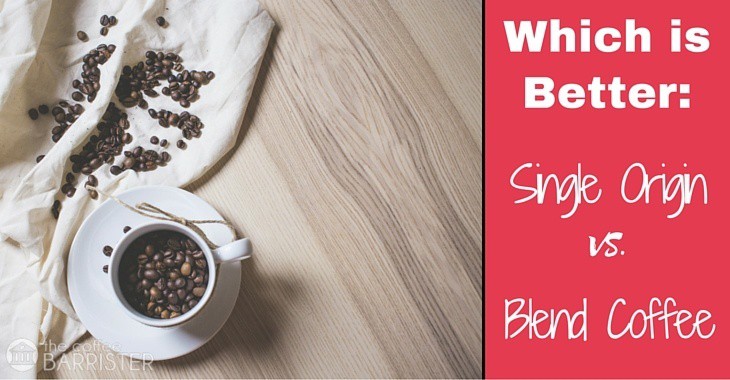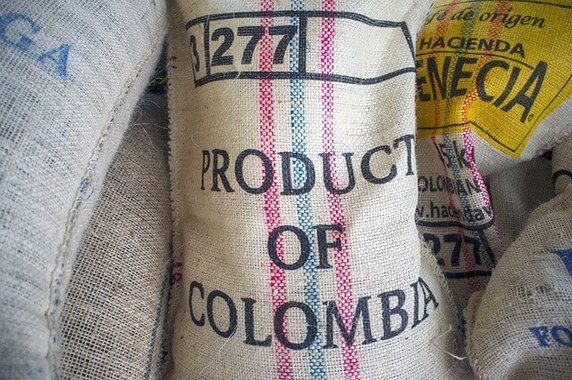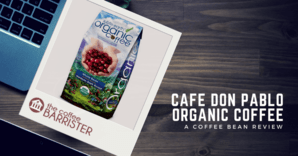
A single origin coffee is a bag of beans, which all originated from the same country or region. These beans typically have a distinctive flavor based on the area where they’re grown. The flavors are heavily influenced by the soil, climate, altitude, shade levels, along with many other factors.
A blend is created by mixing coffee beans from different locations. There are some blends that use up to 9 different types of beans, but according to Melissa Stein, the first ever blend comprised of one part Yeman Mocha and two parts Java Arabica beans.
The Case for Single Origin Coffee
Purists who support single origin coffee suggest that this is only way to full appreciate the true nature of each individual coffee. Whilst single source coffee might not be ‘perfect’ by itself, some connoisseurs believe they should still be enjoyed and appreciated exactly as it is. In recent years, there’s even a growing trend where people prefer to experience coffee in its most natural form. You can read more about notable single-origin coffee at Coffee Lovers USA.
Single origin coffee also creates a more personal coffee experience, as consumers are able to pinpoint the exact location where the beans came from. These days, knowing the country of origin is not good enough. Instead, there’s been a growing emphasis on traceability, where consumers want to know the specific cooperative, farm and field of where the coffee beans came from. Andrew Hetzel suggests that traceability allows consumers to relate more to the product and to appreciate the finer nuances of the taste.

The highest quality single source coffee are often wet processed, as this helps produce a crisp and clean coffee whilst retaining the bean’s natural and unique flavors. An increase in the demand for high-quality specialist coffee has led to improvements in the overall production and supply chain process in the coffee industry.
According to Jackie Heider from Boston Stoker, you should pick between single origin and blend based on what you’re brewing. He stresses that different brewing method brings out different tastes and notes, and that single origin coffee isn’t suitable for espresso because it needs a combination of sweetness, acidity, and crema…which one source usually cannot offer. Instead, alternative brewing methods such as pour-over, Chemex or AeroPress, are more suitable in extracting the delicate intricacies of single origin coffees.
When preparing single origin coffee, you should take the following to consideration:
- Source light roasted beans as they preserve more of the bean’s flavor than dark roasts.
- Brew correctly in order to extract as much as the flavoring notes as possible.
- Keep your coffee black (milk and sugar free) to fully appreciate the coffee’s true taste and aroma.
- Enjoy the personal connection and stories from the bean’s origin and producers.
The Case for Blended Coffee
Although blends typically create a well-rounded, smooth and full bodied taste, Mark Beattie states that coffee roasters create blends because it increases profitability, spread supply and quality-related risks, improves consistencies over different seasons, and lastly…as a marketing tool. Sometimes, blends are also made to disguise older or less popular beans with higher quality beans.
Coffee beans are normally blended after roasting, but some are combined when the beans are still green.
Creating coffee blends is a skilled art. When you mix two type of beans with distinctive qualities, it doesn’t mean the resulting blend will exhibit a combination of the two. As you might expect, if the two qualities don’t go well, it’ll have a detrimental effect. Similarly, the results will be exponentially better if the varying qualities of the beans used supplement one another.

As such, creating successful coffee blends is a complicated proposition where you must consider and balance the following factors: acidity, solubility, initial taste, and aftertaste. For example, a coffee roaster must go through an in-depth trial and error to find the perfect balance between one type of bean that’s more bitter and the other one that’s sweeter.
According to Matthew Perger, large-scale roasting is no easy feat. These roasters have to produce consistently similar products and continuously tweak up to eight different type of beans to buffer seasonal changes in the flavor.
Overall, blended coffee is all about the consistency. Although there isn’t a fixed formula, there is usually a closely guarded base recipe used to create the standard taste. As the crops change from season to season, the exact formula will be altered so that the end-results remain roughly the same.
The basic recipe is one of the most well-kept secret amongst blenders because it’s their UNIQUE SELLING POINT.
Blend coffee should be:
- Source light roasted beans as they preserve more of the bean’s flavor than dark roasts.
- Brew correctly in order to extract as much as the flavoring notes as possible.
- Keep your coffee black (milk and sugar free) to fully appreciate the coffee’s true taste and aroma.
- Enjoy the personal connection and stories from the bean’s origin and producers.
The Coffee Barrister's Verdict [CONCLUSION]
It is difficult to state a winner in the single origin vs blend coffee debate. When you compare between single source coffee and blended coffee, it’s like comparing apples and oranges. They both have their strengths and weaknesses. It mainly depends on your taste or the consumer segment you’re targeting.
Even James Hoffmann, 2007 World Barista Champion who won by brewing single-source coffee, admits blended coffee is sometimes better, depending on the individual’s personal taste and occasion.
Overall, there are times where you may be compelled to try micro-lot coffee from a top-end connoisseur. Other times, you might just prefer to go for a reliable, well-established blend that you know and love. As such, let’s not focus on whether single-sourced or blended coffee wins. Instead, rejoice and enjoy the variety that is open to us all.
In summary, it’s a hung jury on this one!!!





